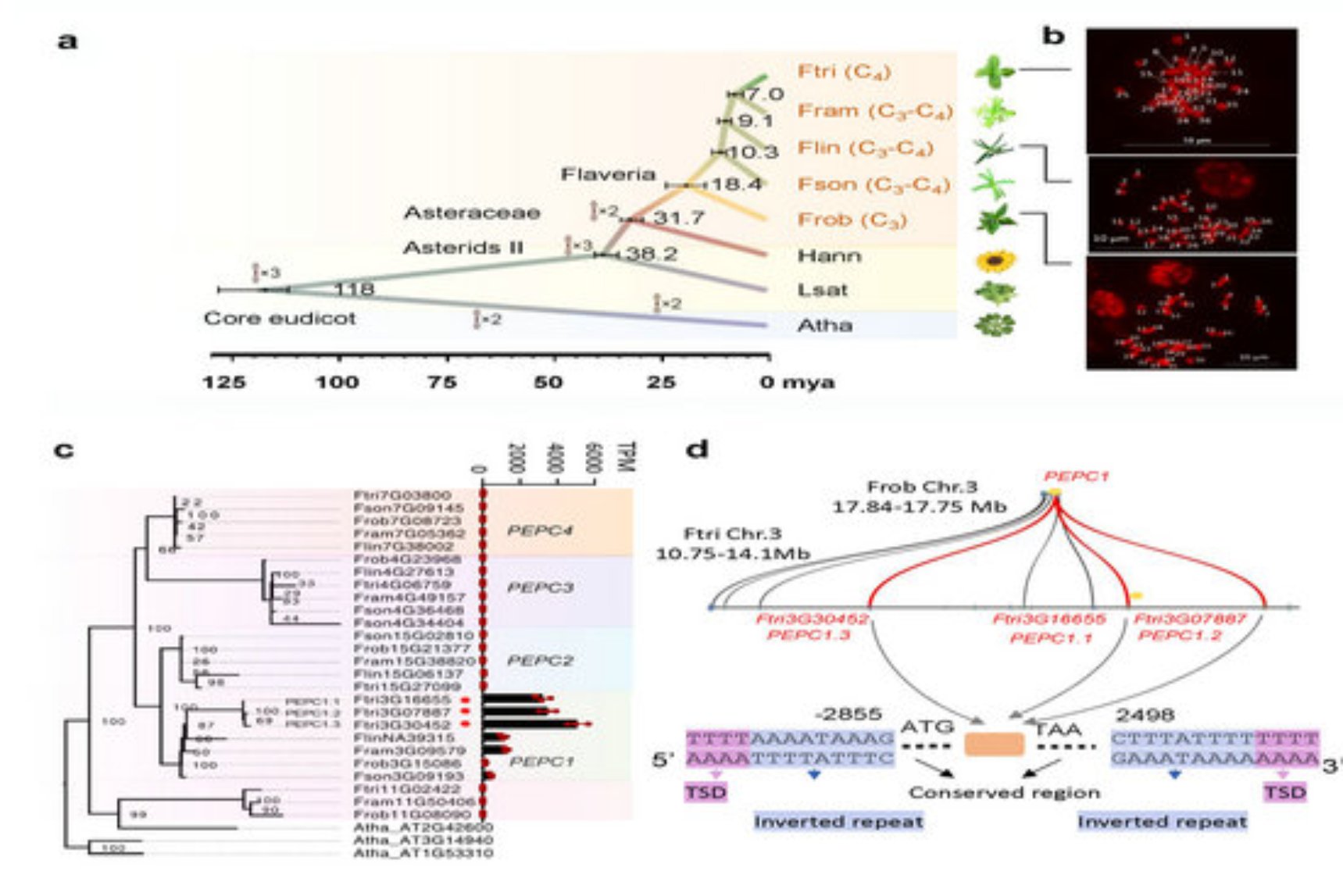Recently, researchers from the Biotechnology Research Institute of the Chinese Academy of Agricultural Sciences (CAAS), in collaboration with the Center for Excellence in Molecular Plant Sciences (CEMPS) and the Institute of Genetics and Developmental Biology (IGDB) of the Chinese Academy of Sciences (CAS), have preliminarily unveiled the molecular mechanism of C4 photosynthesis evolution. This work provides theoretical support and genetic resources for engineering C4 photosynthesis into C3 crops. The related research findings have been published in the internationally renowned journalNature Communications.
C4 photosynthesis originated approximately over 30 million years ago during the Oligocene epoch, evolving from the C3 type to adapt to environments with high temperatures, drought, and declining atmospheric CO₂ concentrations. Due to its specialized anatomical structure and metabolic pathway, C4 plants possess higher efficiency in utilizing light energy, nitrogen, and water compared to C3 plants. Integrating the C4 photosynthetic pathway into C3 crops to enhance yield and stress resistance is often referred to as the "Apollo Program" in life science research. However, progress in C4 engineering has been slow due to limited understanding of the molecular mechanisms underlying C4 evolution.
The genusFlaveria, which includes C3, C4, and C3-C4 intermediate species, serves as an ideal model for studying the evolutionary mechanism of C4 photosynthesis. The study found that genes encoding key enzymes of the C4 pathway (such as CA, PEPC, PPDK, etc.) and transporter proteins exist in both C3 and C3-C4 intermediate species, with highly conserved chromosomal locations. However, these genes exhibit very low expression levels in C3 species and are not involved in photosynthesis. In the C4 species ofFlaveria, the key C4 genePEPC1has gained two additional copies. Furthermore, specific key signature sequences characteristic of retrotransposons were identified upstream and downstream (2.5-2.8 kb) of these new copies. This suggests that the newPEPC1copies likely arose via retrotransposition events. Consequently, it is hypothesized that the increased expression levels of C4 genes in C4 species may be partially attributed to retrotransposon-driven gene copy number amplification.
Ethylene Response Factors (ERFs) are a classic class of regulatory factors involved in abiotic stress responses. The study revealed that more ERF family transcription factors participate in regulating key C4 genes in C4 species. This indicates that the origin of C4 photosynthesis represents an adaptive mechanism of C3 plants to cope with challenging environmental conditions, such as high temperature, high light, drought, and low CO₂.
The study was supported by the National Key Research and Development Program of China (2020YFA0907600)
Original article:doi.org/10.1038/s41467-025-56901-y

Figure: Schematic Diagram of C4 Photosynthesis Evolution in Flaveria Genus |